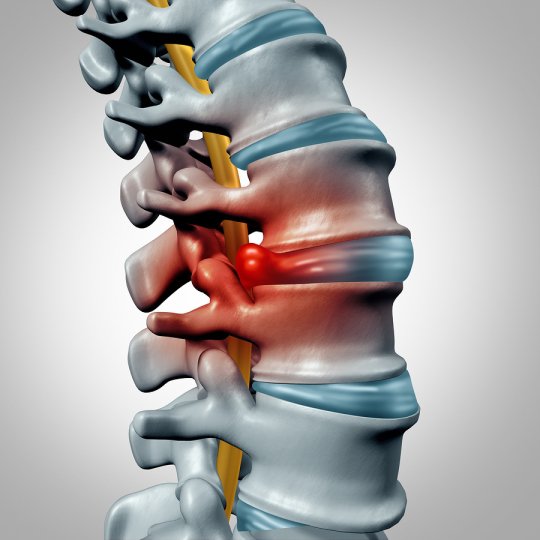Thoracic Spine Conditions: Symptoms and Surgical Solutions

There are three main regions of the spine. The top portion is the cervical region, the thoracic region is the middle, and the lumbar region is the bottom. Because the lumbar region is responsible for supporting a great deal of weight and much of the spinal movement occurs in the cervical region, these two sections are most likely to sustain problems. However, it is possible for back pain to affect the thoracic region. A spine surgeon will determine the underlying cause of your symptoms and recommend effective treatment options.
Conditions
One of the most common conditions that can affect the thoracic region is disc herniation. This refers to a problem with one of the intervertebral discs that serve as shock absorbers and are located between the bones of the spine. Protruding disc material can compress nearby spinal nerves, causing painful symptoms. Other possible thoracic conditions include kyphosis, which refers to spinal deformities, compression fractures of the vertebrae, spinal infections, trauma, and tumors.
Symptoms
The symptoms of thoracic spinal disorders can vary widely, depending on the nature and severity of the problem. Additionally, even patients with the same thoracic disorder may experience varying symptoms. Pain in the thoracic region may inhibit a patient’s flexibility, range of motion, and ambulation. Other symptoms can include muscle weakness, numbness, and tingling. Muscle spasms and back stiffness can also occur.
Treatments
The surgical treatment options for thoracic problems depend on the underlying condition. For example, patients with a herniated disc may undergo a thoracic discectomy, perhaps combined with a thoracic laminectomy. A laminectomy is the removal of the lamina, which is the back portion of the spinal bone. A discectomy refers to the removal of the herniated portion of the disc to relieve pressure on the spinal nerves. For many thoracic conditions, patients may also require vertebral fusion to stabilize the spine.
At Spine Institute of Nevada, you’ll find a continuum of care for cervical, thoracic, and lumbar spinal problems. We offer sophisticated, minimally invasive surgery for patients throughout Las Vegas, including thoracic laminectomy, discectomy, posterior thoracic fusion, and lateral thoracic fusion. Give us a call today at 702-239-3787 to set up a visit to our spine surgery clinic.
